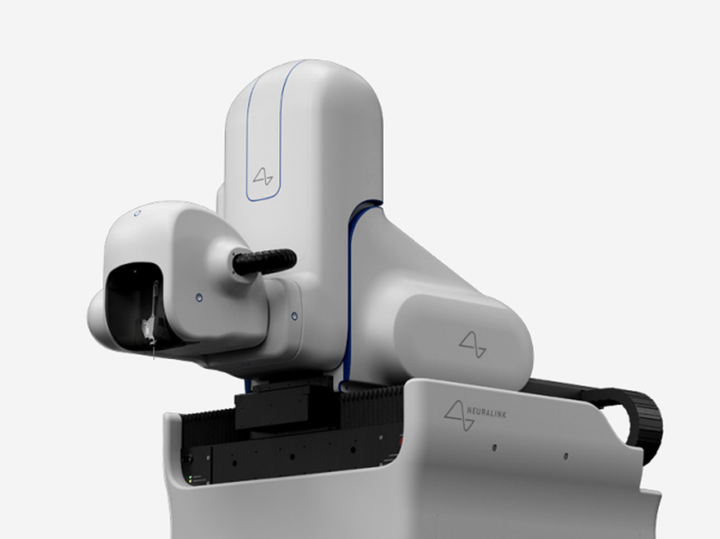“The brain doesn’t work like that”: neurophysiologist Balaban debunked Musk’s “sensation” about implanted electrodes
[ad_1]
While we were sleeping, Musk inserted a chip into a man’s brain! “Yesterday the first person received an implant from Neuralink and is recovering well,” the entrepreneur said. However, Russian scientists did not share the general excitement about this. Yes, a simple electrode was called a “Telepathy” device, yes, it will allow you to control a virtual mouse… But all this, in scientific terms, is not very different from what has already been achieved by other scientists. We asked the scientific director of the Institute of Higher Nervous Activity and Neurophysiology of the Russian Academy of Sciences, Academician of the Russian Academy of Sciences Pavel BALABAN, to help figure it out.
A neurochip is an integrated circuit chip (such as a microprocessor) that is designed to communicate with brain cells. It measures the electrical activity of neurons and can also stimulate them.
The Telepathy neurochip, according to Neuralink founder Musk, shows “promising detection of neural spikes,” in other words, it detects neuronal activity.
The company has been conducting research in this direction for several years. In 2020, the interface between the brain and the computer was tested in experiments on pigs. An implant implanted in a pig’s brain read signals from the neurons of an animal that sniffed something, after which the activity of the neurons was displayed on the screen. To implant the chip into brain tissue, scientists used a special robot.

And three years later, Musk announced that they had taken a huge step towards treating human brain diseases, primarily paralysis: they implanted a chip in the first volunteer. His name is not given – he was selected from people with severe paralysis or severe motor impairment. Ultra-thin threads of the neurochip were implanted in the patient’s brain areas that control the intention to move.
While the “chipped” person is coming to his senses. As in the pig experiment, the neurochip is designed to wirelessly transmit brain signals to an application, whose special program converts them into specific commands – for example, move the mouse cursor. Ideally, what will happen is what is called control by the power of thought.
The materials provided by Elon Musk’s company say that the study is being conducted in accordance with an investigational device authorization issued by the FDA (US Department of Health and Human Services) in May 2023.

Comment by Pavel Balaban:
— From a scientific point of view, there is no news here. Electrodes have been inserted into the brain since the 1960s, including in humans. For research purposes.
– Can you name who inserted it and for what purpose?
“For example, our famous neurophysiologist Natalya Petrovna Bekhtereva was one of the first in the world to do such experiments in her laboratory at the Leningrad Institute of Experimental Medicine. She wasn’t doing this for fun, or to control the phone. It was about suppressing a severe form of epilepsy.
In the West, for example, Montreal neurosurgeon Wilder Penfield became famous for similar brain operations. He gently stimulated conscious epilepsy patients with an electrical current delivered through thin electrodes.
— Were the experiments successful?
– No. Penfield’s experiments even revealed something unusual: sometimes stimulation of certain areas of the brain caused the patient to re-experience certain events in precise detail. Epilepsy, as now, is treated by removing part of the brain. By the way, at our institute we now seem to have found a way to rid patients of it – using genetic methods.
— In general, at the time of Bekhterev there was no talk of controlling devices or exoskeletons for paralyzed people. So, maybe Musk and those who are developing the same technologies are on the right track after all?
“Their electrodes are essentially not very different from those that Natalya Petrovna used. Maybe they have become much thinner, that’s all. The idea is quite simple: a person, using mental commands, will be able to perform no more than four simple actions – for example, move the mouse cursor up, right, left, down. My colleagues and I from the Federal Center for Brain and Neurotechnology achieve the same thing by recording an electroencephalogram. The exoskeleton listens to brain commands, which are read by the EEG helmet from the brain, and helps perform movements during the rehabilitation of patients. A similar system, even more advanced, can be controlled thanks to eye movement: the camera simply reads the movements of the eyeball, transmits it to the computer, and it then executes the commands. But with different technologies, as I said, we cannot step over the barrier of 4 different teams.
– What’s stopping you?
“We are limited by the fact that we do not fully understand where exactly in the brain we need to receive signals. We have 80 billion (!) neurons. In order for a computer to hear everything, you need not hundreds, but 80 billion wires, or threads, as Musk calls them. So for now, they insert their chips with threads into the brain tissue arbitrarily, very roughly, without understanding which neuron they are connected to. But the brain doesn’t work like that; everything in it is subject to certain patterns. With any movement, for example, centers for decision-making, management and control of movements, and feedback operate, which Elon Musk’s specialists never mentioned. But without the simultaneous participation of all these centers, purposeful movement is impossible.
Newspaper headline:
Chip and Musk to the rescue
[ad_2]
Source link








